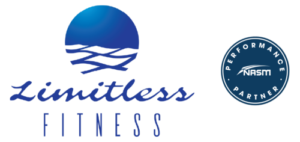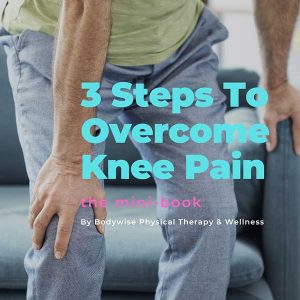
Do runners need strength training?
Running has evolved considerably over the past 20 years, with new data coming out yearly on the benefits of running and the importance of strength training. Injury rates among runners are some of the highest in the sports world. Research indicates that 84% of runners have experienced a running-related injury, and 45% will sustain an injury within a year. It has been found that strength training, in addition to your running program, will decrease your risk of injury and help with your recovery if you are working through one.
Strength training for runners is a growing movement that has more benefits than just injury prevention. Regardless of whether you are an elite runner or a weekend warrior, incorporating weightlifting into your weekly running program will provide significant benefits.
Recovering from running injuries with strength training.
Preventing running injuries with resistive exercises.
Strengthening running muscles improves the body’s ability to handle external forces and increases tolerance to the stresses of running. Resistance training improves the nerve-muscle connection, enhancing coordination and efficiency in running. This leads to lower injury rates among runners who strength train. In fact, one study found that athletes who added strength training to their training program had an injury rate of 26.2% compared to 72.4% of those who did not.
Do elite runners lift weights?
Professional runners across all age groups and demographics utilize strength training as a way to improve muscular endurance, running economy, neuromuscular efficiency, and injury prevention. You may ask if it is necessary for a weekend warrior or recreational athlete to lift weights. Regardless of your ability, commitment, or race schedule, some type of resistive exercise in any form or prescription will improve your tolerance and ability to run. It is a common myth that strength training will ruin one’s running form due to muscle imbalances. On the contrary, proper prescription of strength training will actually improve form and function, providing a more enjoyable running experience.
How do you balance running and strength training?
Approaching running or strength training without a plan is a recipe for injury. Significant gains in both can be achieved in shorter periods of time when you seek out the help of professionals in the field. If there has been a recent injury that you are working through or an old one that is slowing you down, talk with one of our Doctors of Physical Therapy; they are experts in the field of exercise prescription after injury. For runners who are looking to supplement their training or work on improving their tolerance to running, it’s beneficial to consult a personal trainer who specializes in this area. David Ayotte MS, CSCS, CPT of Limitless Fitness in Epping, NH, is an excellent resource for runners looking to gain strength while improving their running. Check out the following answers to some common questions he gets with his clients.

David Ayotte MS, CSCS, CPT Of Limitless Fitness in Epping, NH. Master’s degree in Exercise and Sports Science, NSCA Certified Strength and Conditioning Specialist, ACSM Certified Personal Trainer, United States Track and Field Level 2 Certified Endurance Coach, FMS LVL 2 NSAP Certified Sports Nutritionist
What type of strength training is best for runners?
Full body strength training is beneficial to runners of all ages and abilities. Running is a high-impact sport that benefits from core and lower-body strength training, reducing injury. Sessions should emphasize proper form in key movements and patterns, including squatting, hinging, carrying, and lunging. When training these major movement patterns, the training plan should keep these movements to low volume (4-6 rep range) and high-intensity reps. For accessory exercises such as single-leg deadlifts, step-ups, 1-arm rows, and core training, these movements should be done at a higher volume (12-15 reps) and lower intensity. These movements do not require heavy amounts of weight, but they do assist in helping runners maintain muscular endurance in areas of their bodies such as hips, quadriceps, soleus, calves, and hip flexors that tend to fatigue very quickly as training runs increase in length.
How many times a week should a runner strength train?
Two to three full-body strength training sessions are optimal for most runners in order to avoid the chances of injury. Sessions should last 60 to 75 minutes, including warm-up and cool-down, with exercise selection focused on the current training block. As the training blocks continue on and runners start to target goal races and incorporate interval workout sessions into their weekly routines, then strength training sessions can take a more strength and power-based approach. It is important for runners to follow a well-constructed training plan so that both their strength training and endurance training sessions complement one another as opposed to being too
intense and not allowing their bodies to recover properly.
Is it okay to run and lift on the same day?
It is perfectly safe to run and lift on the same day. When doing so, runners need to be mindful of the goal of each training session. There is the adage, keep your “easy” days “easy” and your “hard” days hard.” That said, lifting sessions should be done before running workouts with a few hours (4-6) of recovery between sessions if possible. This approach allows the body to effectively absorb the training while ensuring sufficient recovery for maximum force output during runs. On easier training days focused on aerobic capacity, weightlifting can be higher volume with lighter weights, emphasizing exercises that improve running mechanics and mobility to support recovery and reduce injury risk.
How can personal training improve your running?
Personal training can help runners improve their performance in a variety of different ways. Working one-on-one with a personal trainer, first of all, provides the runner with the accountability to incorporate strength training into their weekly routine. Personal training can help runners
identify any biomechanical deficiencies that they may be experiencing in their running stride and gait. Once these deficiencies have been identified, personal trainers can design training routines that incorporate movement patterns to correct these deficiencies and allow the runners to
be more biomechanically efficient while training.
Still not convinced that strength training can improve your running? Look at this result from one of David’s clients:
Liv Taber, one of David’s clients at Limitless Fitness, ran a 3:09.57 marathon and qualified for the 2026 Boston Marathon! This was a marathon personal best of 61 minutes for her, an improvement that took less than 1 year to accomplish with structured endurance and resistance training. She credits her strength and mobility routines are what helped her conquer the hills and recover quickly from her training runs.
Finding the right team is essential for maximizing your enjoyment of running and preventing injuries. Look no further than Limitless Fitness & Bodywise Physical Therapy to help you achieve success.
























Comments 2
Superb writing!
Your blog always delivers quality content!